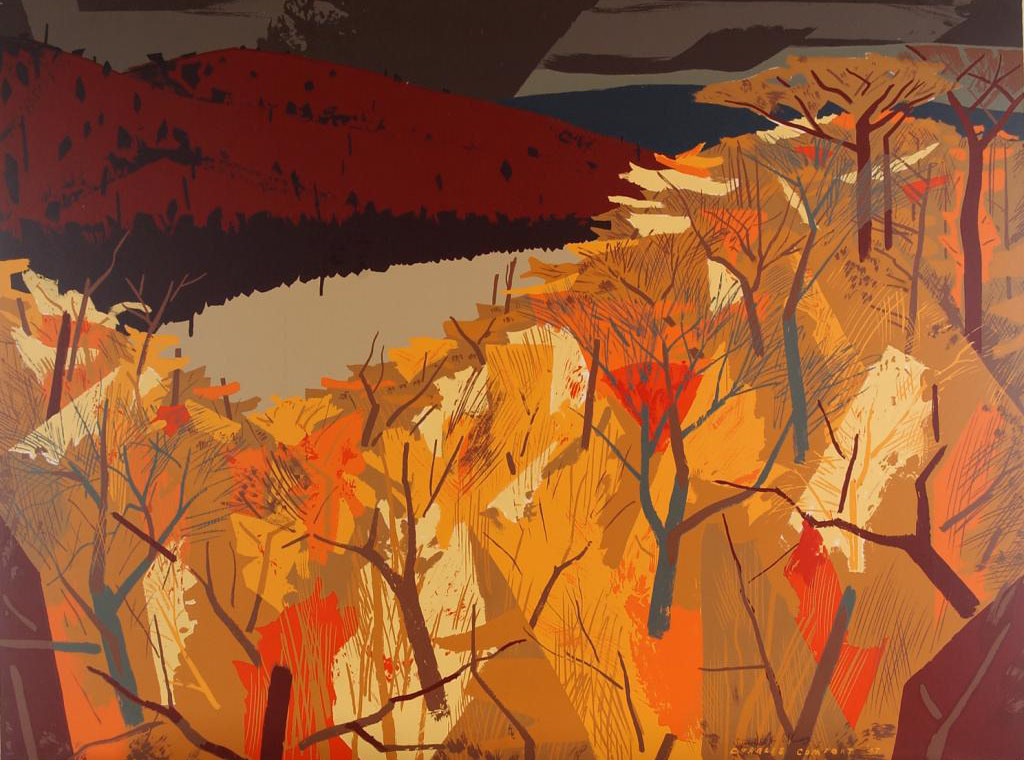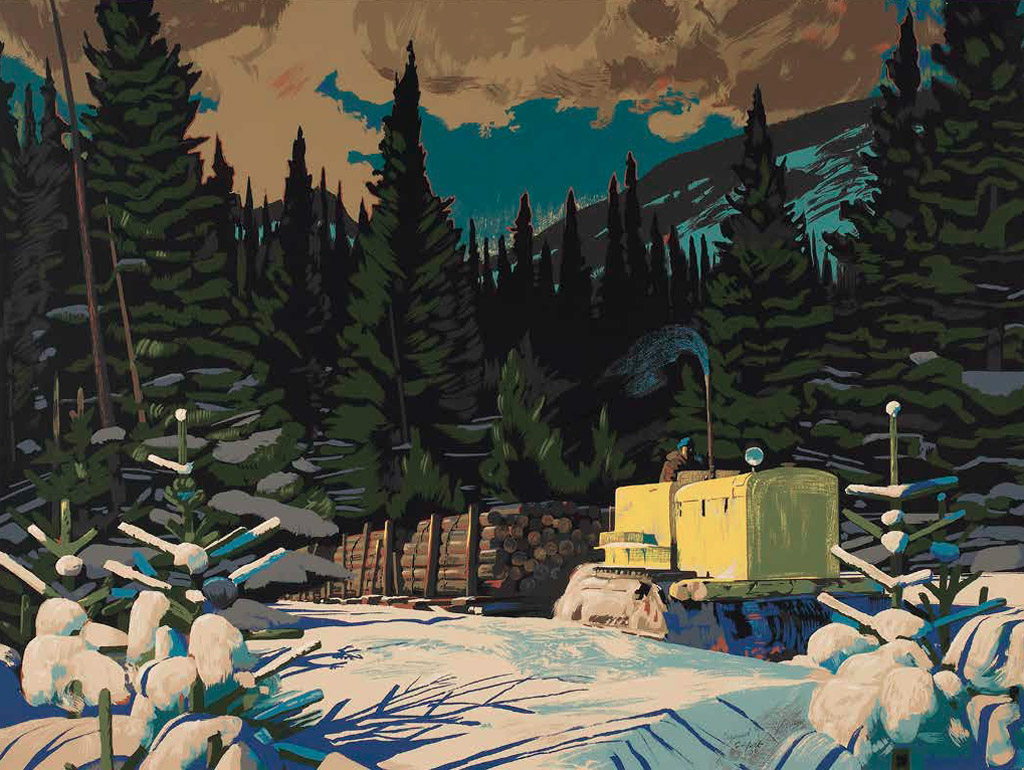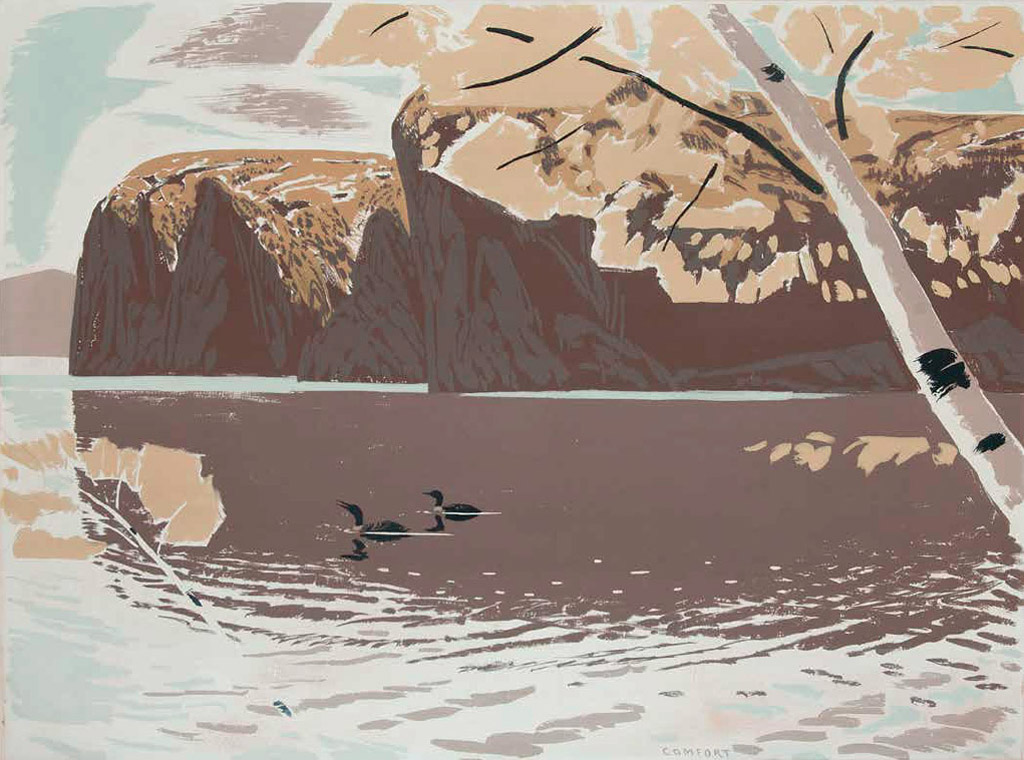Born in Scotland, Canadian artist Charles Fraser Comfort setted in Winnipeg in 1912. At the age of fourteen, he entered a watercolour in a competition. Judged by F. H. Brigden, this competition led to his working in Brigden’s Winnipeg office. Comfort studied at the Winnipeg School of Art and, after winning prize money in a national art competition in 1921, he departed to study in New York at the Art Students League under Robert Henri, eventually moving to Toronto in 1925.
He joined forces with Will Olgivie in the early 1930s in an effort to capture revenues from commercial sources. By the time he entered World War II as a Senior Official War Artist, the team had completed numerous murals and stone architectural projects such as friezes. Before the war, he had been on the staff of the Ontario College of Art, as well as the University of Toronto, where he resumed teaching after his return to Canada. From 1960 until he retired in 1965, Comfort was appointed Director of the National Gallery of Canada.
He was a member of the Royal Canadian Academy (Associate–1936, Member–1942, President–1957); the Canadian Society of Graphic Art (1925); the Canadian Society of Painters in Water Colour (1926); the Ontario Society of Artists (1927); the Manitoba Society of Artists as an honorary member and the Canadian Group of Painters (1933).
Early on, Comfort had a strong interest in the abstract, reducing his subjects to basic geometric forms. In ‘Algonquin Lake’, that interest is readily apparent with solid blocks of colour and their underlying geometry colouring in the fall foliage, overlaid by a bold graphic depiction of the tree trunks and branches. Immediately identifiable as a Canadian landscape, it nevertheless challenges our way of seeing.
Comfort’s work is held in numerous corporate, private and public collections including the Winnipeg Art Gallery, Art Gallery of Ontario, Hart House, University of Toronto, the National Gallery of Canada and the War Museum. He died in Ottawa, Ontario in 1994.
In 1974, referring to himslef as an artist, Comfort said “For the artist, the visible world is the valid point of departure for a work of art. This does not mean that his purpose is to imitate nature, but rather to recreate it, remoulding and harmonizing it to agree with his own idiomatic mannerisms and his own personal concepts.”


